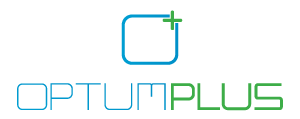Last year around this time I wrote a blog titled: Sustainability is a Circular Journey, in which I refer to the concept of the Circular Economy and its four essential building blocks of a circular economy which enables companies / organizations to transition to a culture of restorative and regenerative by design which is fully sustainable from an ecological perspective.
As per a new report. the Earth’s resources used up at quickest rate ever in 2016.
“In just over seven months, humanity has used up a full year's allotment of natural resources such as water, food and clean air – the quickest rate yet”
The future of sustainability and wellness is achieving a restorative and regenerative economy as we are in the age of the Anthropocene- when human activities started to have a significant global impact on Earth's ecosystems. For the past century, we have been digging things out of the ground, turn them into products / materials that last from minutes to a few years at most, and then stick them back into the ground as landfill. We are NOT making the world sustainable through our linear approach to sustainability.
“The AEC industry answer to sustainability is chained to the past, it is chained to the concept of green material with no or minimum ability to recycle.”
Even if there was a possibility of 100% recycle yet it is chained to the past and the “linear economy” as recycle takes more energy. The answer is to reuse material by looking at the circularity of the product we use in our buildings and keep every part of the product we use in our buildings away from the landfill. Yes, it is possible to reuse material and we as an industry must start moving towards a culture of restorative and regenerative by design. One way to convince yourself that this is possible is to read the book: Sustainable materials- with both eyes open by Julian M Allwood and Jonathan M Cullen based on research conducted at the UIT Cambridge.
The AEC industry must collectively initiate the practice “The Circular Design” which has recently gained the attention of governments, NGO’s, researchers and increasingly, large companies. IDEO – the global design firm calls it as the next Big thing in Design. They have even published a Circular Design Guide. You will ask what has changed? Here what IDEO says has changed:
“The scale of what we’re designing has shifted from products, to companies, to economic systems. Who we’re designing for has expanded from a solitary user to an intimately connected web of people, spanning the globe.”
The Circular design / economy movement started by Ellen MacArthur Foundation is working with firms such as Philips – RAU Architects, Google, Patagonia, Caterpillar, Renault and others, are making the transition towards a circular economy and an analysis of case studies, the Foundation has identified the following four essential building blocks of a circular economy:
· Circular economy design - Companies need to build core competencies in circular design to facilitate product reuse, recycling and cascading
· New business models - The shift to a circular economy requires innovative business models that either replace existing ones or seize new opportunities.
· Reverse cycles - New and additional skills are needed for cascades and the final return of materials to the soil or back into the industrial production system.
· Enablers and favourable system conditions - For widespread reuse of materials and higher resource productivity to become commonplace, market mechanisms will have to play a dominant role, but they will benefit from the support of policy makers, educational institutions and popular opinion leaders.
The AEC industry to stay relevant must come up an industrial system that is, by design and intention is restorative, using material/resources (either in a bio-cycle or in a techno-cycle) and applying materials /resources designed for multiple use cycles, at high quality. The AEC Industry must take a radical, restorative, regenerative approach to way we conduct business. We must move away from the way we do business which is deeply rooted in a linear approach to growth - make, use, dispose. We should design and build buildings that reuse components and structures that can be extracted without damage and at low cost?
This will require us an industry asking ourselves the question: Does this mean we must start from scratch and redesign everything we do today. Yes, this will require making changes that require new workflows, new training, and evangelism and commitment to from builders and owners the long-term benefits of transforming how buildings and communities are designed, constructed, maintained and operated across the globe.
Yes, we will have to start by redesigning everything, starting from starch. Are we as an industry up to the challenge? Can I see raised hands?
Philip Thomas is Optimizing Project Delivery Services; Workplace Experience Strategist; Design & Circular Thinking at Optum+.
Sparking conversation on “Disrupting the AEC Industry” and “The Untethered Workplace”.
I’m thrilled to announce that I’ll be presenting on February 15, 2017 on “Disrupting the AEC Industry” and on February 16, 2017 on “The Untethered Workplace” at the upcoming BUILDEX Vancouver conference!
This is Western Canada’s largest event for the Construction, Renovation, Architecture, Interior Design and Property Management industries with 14,000 attendees attending each year.
This event is held at the Vancouver Convention Centre West where I’ll be joining other speakers who are all committed to employing the best practices and keeping up with the trends in their industries. You can visit www.buildexvancouver.com for more info.
Hope to see you there!


